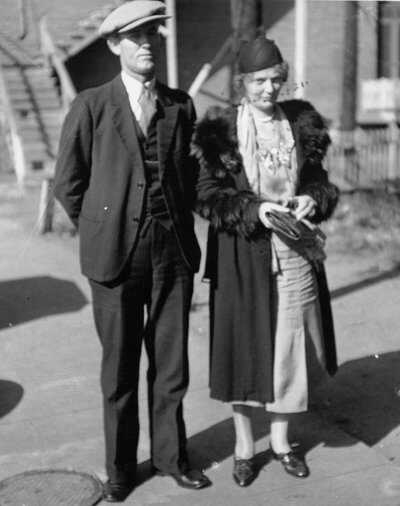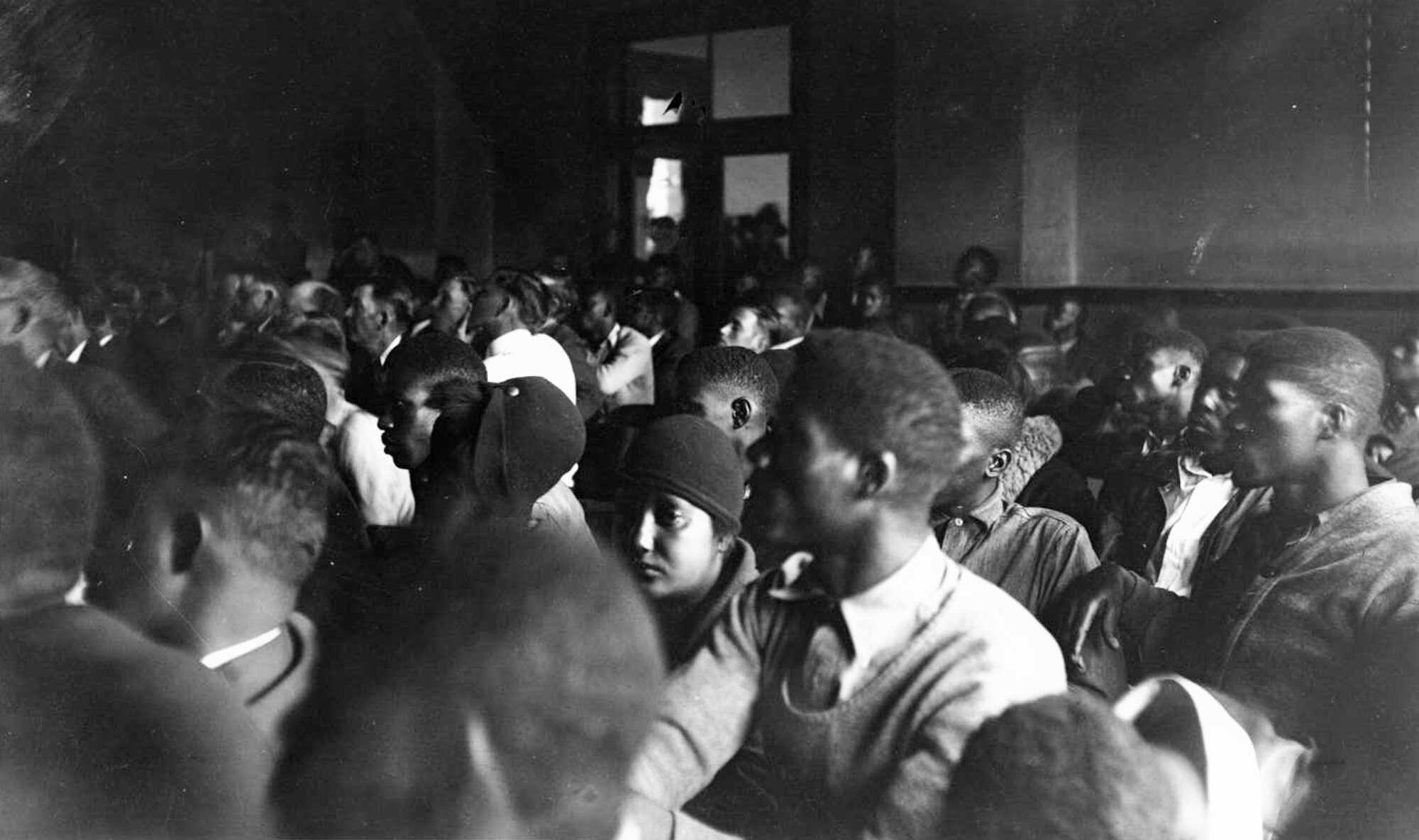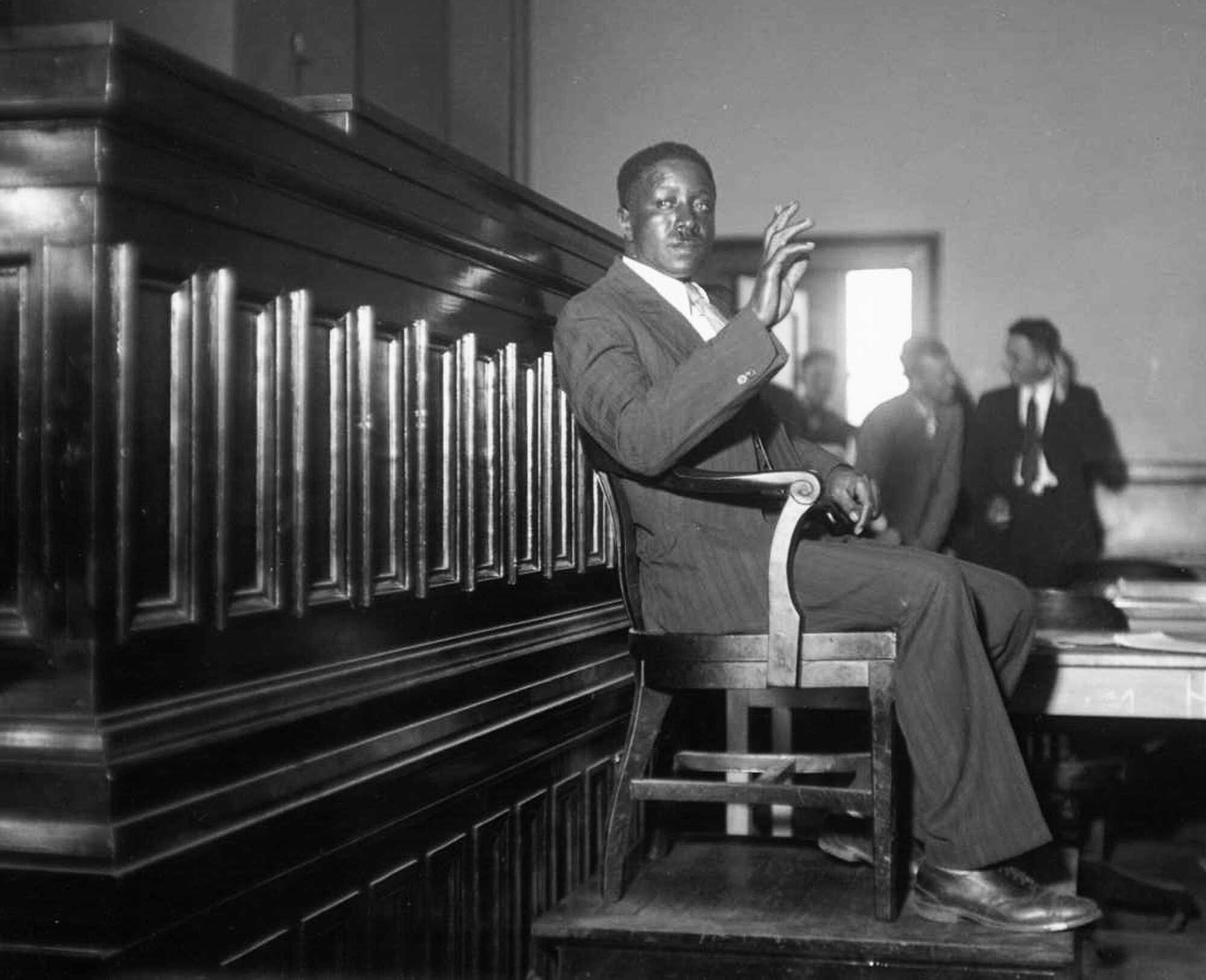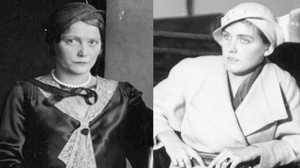The Scottsboro Trial: A Timeline

1931
March 25: In the depths of the Depression, a fight breaks out between white and black young men who are riding as hoboes on a Southern Railroad freight train. The train is stopped by an angry posse in Paint Rock, Alabama, and nine black youths are arrested for assault. Rape charges are added, following accusations from two white women who have also come off the train, Victoria Price and Ruby Bates. The accused are taken to Scottsboro, Alabama, the Jackson County seat. The women are examined by Drs. R. R. Bridges and Marvin Lynch.
News of the incident spreads quickly; the Jackson County Sentinel, printed that evening, decries the "revolting crime." White outrage erupts over the allegations, and a lynch mob gathers at the Scottsboro jail, prompting the sheriff to call Alabama Governor Benjamin Meeks Miller. Governor Miller in turn calls in the National Guard to protect the jail and its prisoners.
March 30: A grand jury indicts all nine "Scottsboro Boys."
April 6-7: Before Judge A. E. Hawkins, Clarence Norris and Charlie Weems are tried, convicted, and sentenced to death.
April 7-8: Haywood Patterson is tried, convicted, and sentenced to death.
April 8-9: Olen Montgomery, Ozie Powell, Willie Roberson, Eugene Williams and Andy Wright are tried, convicted, and sentenced to death.
April 9: The case against Roy Wright, aged 13, ends in a hung jury when 11 jurors seek a death sentence, and one votes for life imprisonment.
April-December: Shocked by the speedy trials, the extreme youth of the defendants, and the severity of the sentences, progressive national organizations take up the Scottsboro case and call for the country to reject the "Alabama frame-up." The National Association for the Advancement of Colored People (NAACP) and the International Labor Defense (I.L.D.) court the defendants, their parents, and public opinion for the right to represent the young men in an appeal, and raise money for their defense.
June 22: The executions of the defendants are stayed pending appeal to the Alabama Supreme Court.
1932
January: The NAACP withdraws from the case.
January 5: A letter from Ruby Bates to a boyfriend surfaces; in it, she denies having been raped.
March 24: The Alabama Supreme Court, voting 6-1, upholds the convictions of seven of the defendants, granting Eugene Williams a new trial because he was a juvenile at the time of his conviction.
May 27: The United States Supreme Court agrees to hear the case.
November 7: In Powell v. Alabama, the U.S. Supreme Court rules that the defendants were denied the right to counsel, which violated their right to due process under the Fourteenth Amendment. The cases are remanded to the lower court.
1933
January: The I.L.D. asks Samuel Leibowitz to take the case while acknowledging its inability to pay any fees. He agrees.
March 27: Haywood Patterson's second trial begins, this time in Decatur, Alabama, before Judge James Horton.

April 6: Ruby Bates appears as a surprise witness for the defense, denying that any rape occurred and testifying that she was with Victoria Price for the whole train ride. Her assertion that she and Price were with boyfriends the night before explains the presence of semen in their vaginas. On the stand, Dr. Bridges admits that the sperm found in his examination were non-motile, and indicates that Victoria Price showed few physical signs of having been forcibly raped by six men, as she claimed, but he refuses to say how old the semen could have been.
April 9: Patterson is found guilty and sentenced to death by electric chair.
April 18: Judge Horton sets the sentence of death for Patterson, and then suspends it on a motion for a new trial. Then, the judge postpones the trials of the other defendants because tensions in town are running too high to expect a "just and impartial verdict."
June 22: Judge Horton sets aside Patterson's conviction and grants a new trial.
October 20: The cases are removed from Judge Horton's court into Judge William Callahan's court.
November 20: Seven of the defendants appear in Callahan's court. The youngest two, Roy Wright and Eugene Williams, have been transferred to a Juvenile Court.
November-December: The trials of Patterson and Norris end in death sentences for both. Judge Callahan's bias might be exemplified by his omissions: he forgets to explain to Patterson's jury how to render a not guilty verdict (Leibowitz reminds him before the jury goes out) and neglects to ask the mercy of God upon Norris's soul.

1934
June 12: Judge Horton is defeated in his bid for re-election.
June 28: The Alabama Supreme Court unanimously denies the defense motion for new trials. Leibowitz had argued that qualified blacks were systematically kept off jury rolls, and the names that were currently in the rolls had been forged after the fact.
October 1: Nashville police arrest two lawyers associated with the I.L.D. for allegedly intending to bribe Victoria Price with $1,500 to change her testimony. The lawyers were never convicted.
1935
February 15: Samuel Leibowitz makes his first appearance before the Supreme Court of the United States. He describes the absence of blacks in Jackson County juries and presents the justices with the jury rolls with forged names. The justices use magnifying glasses to determine the overlay of inks on the page.
April 1: In Norris v. Alabama, the United States Supreme Court finds the exclusion of blacks on jury rolls deprived black defendants of their rights to equal protection under the law as guaranteed in the Fourteenth Amendment. The case is overturned and remanded to a lower court. Patterson's case is not argued before the court because of technicalities in filing dates; however, the court strongly suggests the lower courts review his case "in light of the situation which has now developed."
December: Because of the prevailing sentiments in Alabama, both Leibowitz and the I.L.D. are considered liabilities to the defendants and the defense is reorganized. The Scottsboro Defense Committee (SDC) is formed with Allan Knight Chalmers as chairman, and a local attorney, Clarence Watts, is named co-counsel.

1936
January 23: Patterson is found guilty and sentenced to 75 years in prison. The sentence is a compromise between the foreman, who thought the defendant innocent, and the rest of the jury.
January 24: While being transported back to Birmingham Jail, Ozie Powell pulls a knife and slashes Deputy Edgar Blalock's throat. Sheriff Jay Sandlin stops the car and shoots Powell in the head. Both Blalock and Powell survive.
December: Prosecuting attorney Lieutenant Governor Thomas Knight meets Leibowitz in New York to negotiate a compromise.
1937
May: Thomas Knight dies.
June 14: The Alabama Supreme Court upholds Patterson's conviction.
July 12-16: The third trial of Clarence Norris ends in a death sentence. Pressure from his community, and his defeat in this case, causes Watts to fall ill, leaving Leibowitz to lead the defense.
July 20-21: The trial of Andy Wright ends in conviction and a sentence of 99 years.
July 22-23: The trial of Charley Weems ends in conviction and a sentence of 75 years.
July 23-24: Ozie Powell pleads guilty to assaulting Blalock and is sentenced to 20 years. Rape charges are dropped.
July 24: Rape charges against the last four defendants, Olen Montgomery, Willie Roberson, Eugene Williams, and Roy Wright, are dropped.
October 26: The U.S. Supreme Court declines to hear the appeal of Haywood Patterson.
December 21: Alabama Governor Bibb Graves meets with Allan Knight Chalmers to discuss granting clemency to the five convicted Scottsboro defendants.
1938
June: The Alabama Supreme Court affirms the sentences given Norris, Andy Wright and Weems.
July: Governor Graves commutes Norris's death sentence to life imprisonment.
August: An Alabama parole board recommends a denial of parole for Patterson and Powell.
October: An Alabama parole board recommends a denial of parole for Norris, Weems and Andy Wright.
October 29: Governor Graves meets with the convicted Scottsboro defendants in his office to consider parole.
November 15: Governor Graves denies the pardon applications of all five Scottsboro defendants.
November 17: Weems is released on parole.
1944
January: Andy Wright and Clarence Norris are released on parole.
September: Wright and Norris leave Alabama, in violation of their parole. Chalmers persuades them to return to the South and, despite promises to be lenient, both are returned to jail, Norris in October 1944, Wright in October 1946.
1946
June: Ozie Powell is released on parole.
September: Clarence Norris is paroled again.
1948
July: Haywood Patterson escapes from prison.
1950
June 9: Andy Wright is paroled. He finds a job in Albany, New York.
June: Patterson is arrested by the FBI in Detroit; Michigan Governor G. Mennen Williams refuses to sign the extradition papers to return him to Alabama. Alabama abandons attempts to return him to prison.
December: Patterson is charged with murder after a barroom brawl.
1951
September: Patterson is convicted of manslaughter and sentenced to 6 to 15 years.
1952
August: Patterson dies of cancer.
1959
August: Roy Wright dies.
1976
October: Clarence Norris is pardoned by Alabama Governor George Wallace.
1977
July 12: Victoria Price files a lawsuit against NBC for defamation and invasion of privacy after the broadcast of Judge Horton and the Scottsboro Boys; her claim is dismissed.
1989
January 23: Clarence Norris, the last of the Scottsboro Boys, dies.








